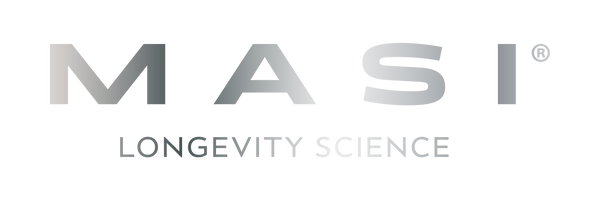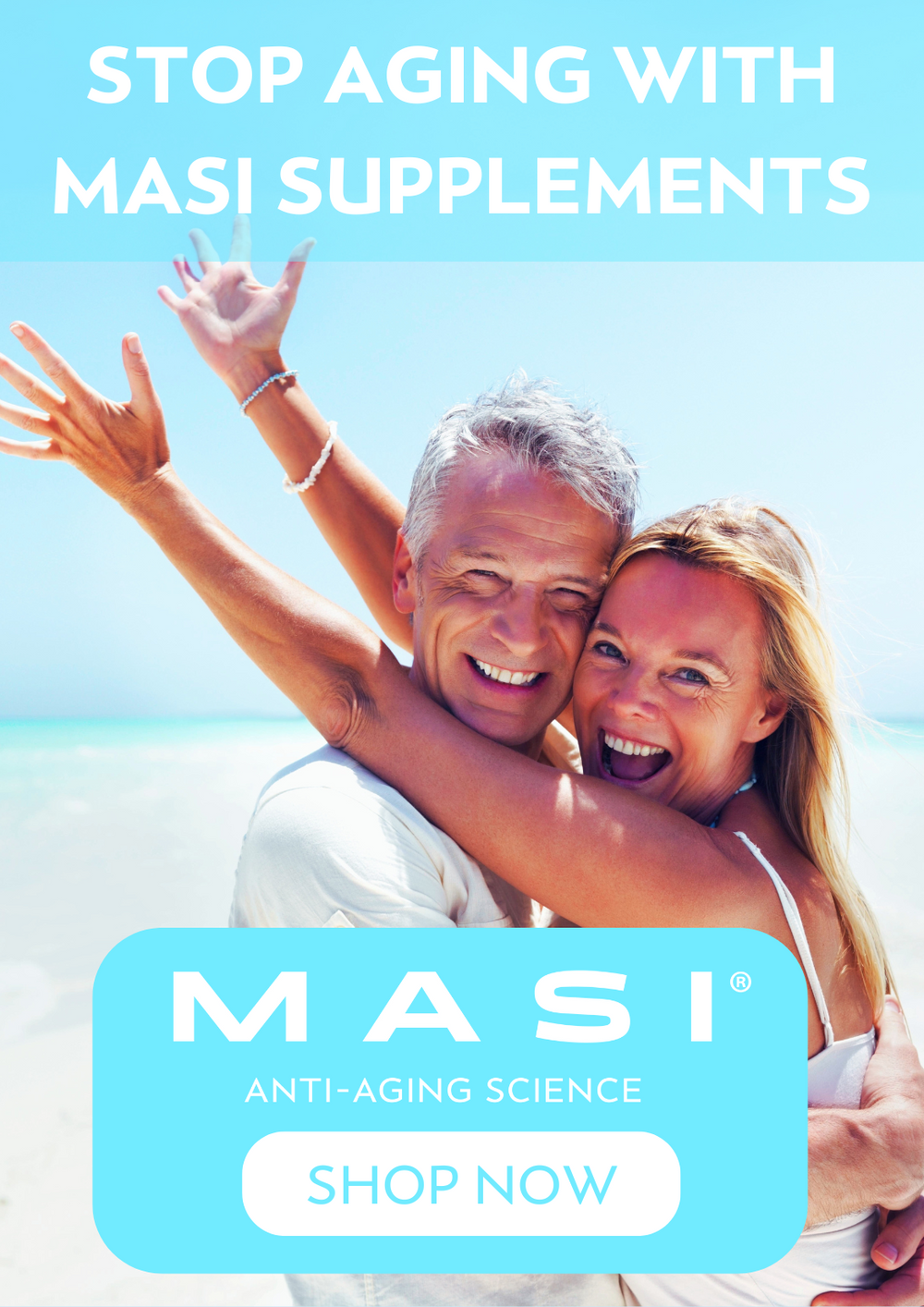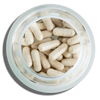Your hormones control energy, mood, muscle strength, and more - but they decline with age. The good news? Regular exercise can help slow down these changes and improve your quality of life. Here's a quick breakdown:
- Key Hormones Decline With Age: Testosterone, DHEA, and growth hormone decrease steadily, impacting muscle mass, metabolism, and stress management.
-
Exercise Makes a Difference:
- Boosts growth hormone and testosterone levels.
- Improves insulin sensitivity to manage blood sugar better.
- Enhances mood by increasing dopamine and serotonin.
- Helps women with menopause symptoms by balancing estrogen.
- Consistency Matters: Long-term exercise, like strength training and cardio, leads to lasting hormonal and health benefits. Stopping exercise can reverse these gains.
Quick Comparison: Exercise vs. Inactivity
| Hormone | With Exercise | Without Exercise |
|---|---|---|
| Growth Hormone | Maintains levels, slows decline | Accelerates decline |
| Testosterone (Men) | Sustains or slightly boosts levels | Drops significantly with age |
| Insulin Sensitivity | Improved, better glucose control | Reduced, higher risk of diabetes |
| Cortisol | Lower stress reactivity over time | Elevated, leading to chronic stress |
Takeaway: Regular exercise isn't just about fitness - it actively supports your hormones, metabolism, and overall aging process. Aim for 150 minutes of aerobic activity and strength train twice a week to stay healthy as you age.
Hormonal Responses to Resistance Training & Overtraining Syndrome in Athletes
How Exercise Changes Hormone Levels
Exercise reshapes your hormonal environment, triggering both immediate and long-term changes. When you work out, your body experiences controlled stress, setting off a chain reaction of hormonal responses designed to help you adapt and grow stronger. Let’s break down how these changes differ in the short term versus the long term.
Short-Term vs. Long-Term Exercise Effects on Hormones
The hormonal shifts from a single workout are quite different from those that develop with consistent training over time. A single session of exercise often causes a temporary spike in hormone levels, especially anabolic ones like testosterone and growth hormone, which rise for about 15–30 minutes after resistance training to support energy needs and tissue repair. At the same time, stress hormones like cortisol and adrenaline surge to mobilize energy and enhance performance [8].
Interestingly, the kind of workout you do plays a big role here. High-volume, moderate-to-high-intensity exercises with short rest periods - particularly those targeting large muscle groups - tend to cause the most noticeable short-term hormonal changes, including increases in testosterone, growth hormone, and cortisol. On the other hand, low-volume or workouts with longer rest intervals lead to smaller hormonal responses [8].
Over time, with consistent training, your body’s hormonal landscape changes in more subtle ways. Baseline hormone levels may slightly increase or decrease, and acute responses during workouts become less dramatic. Essentially, as your body adapts, it learns to regulate hormone production more efficiently [9].
The Body's Adaptation Process
Regular exercise brings about sophisticated changes in how your body manages hormones. Initially, workouts cause a sharp rise in stress hormones, but with repeated training, your body produces only what’s necessary. This reduced stress reactivity, combined with improved sensitivity in tissues that respond to these hormones, highlights how your body becomes more efficient over time [9].
Take high-intensity interval training (HIIT) as an example. Research shows that after six weeks of HIIT, stress hormone levels like corticosterone increase. However, by the 12-week mark, those levels drop, demonstrating how your body adjusts to the workload and minimizes unnecessary hormonal spikes [10]. This adaptation ensures that your muscles, bones, and organs respond more effectively to each hormonal signal, maximizing the benefits of your workouts.
Hormone Pathways Activated by Exercise
Exercise activates a web of hormone pathways, creating a full-body response. The hormonal exercise response model (HERM) explains how physical activity stimulates the sympathetic nervous system, leading to the release of catecholamines (like adrenaline) and adjustments in insulin and glucagon levels. The hypothalamus also prompts the pituitary gland to release key hormones like cortisol [7].
At the start of a workout, your sympathetic nervous system kicks in, releasing adrenaline and noradrenaline. These hormones prepare your body by increasing heart rate, blood pressure, and energy availability. Simultaneously, as your muscles demand more fuel, blood sugar drops, causing glucagon levels to rise and insulin to decrease - ensuring your body maintains energy without risking low blood sugar [3].
Long-term training influences several hormonal systems, including the GH–IGF1 axis, the hypothalamic–pituitary–adrenal axis, and others. These systems regulate everything from stress responses to metabolism, supporting overall health as you age. For example, exercise is a powerful trigger for human growth hormone (HGH) production, which not only aids recovery but also promotes better sleep - a critical period for HGH release [3].
In addition to physical benefits, exercise also affects mood-regulating hormones. It boosts dopamine, reducing stress and combating depression, while increasing serotonin, which influences mood, appetite, memory, and sleep. Interestingly, around 90% of serotonin is produced in the gut, emphasizing the connection between exercise and a healthy diet [3][5].
| Hormone System | Short-Term Exercise Response | Long-Term Training Adaptation |
|---|---|---|
| Growth Hormone (GH) | Significant spike during and after exercise | Slight increase in baseline levels |
| Cortisol | Sharp rise during intense exercise | Lower stress reactivity over time |
| Catecholamines | Immediate surge to mobilize energy | Lower resting levels, efficient response |
| Insulin | Suppressed during exercise | Improved sensitivity, better glucose control |
| Testosterone | Elevated for 15–30 minutes post-exercise | Sustained or slightly higher baseline levels |
This table highlights how exercise impacts hormones in both the short and long term. While a single workout can provide temporary benefits, consistent training leads to lasting changes that promote better health and aging. Regular exercise not only fine-tunes your hormonal balance but also supports a higher quality of life over time.
Long-Term Exercise Effects on Aging
As we age, our bodies naturally produce fewer hormones, which can impact muscle strength, metabolism, and overall health. The good news? Regular exercise can help slow down - or even partially reverse - many of these changes by promoting the body’s ability to produce and use hormones effectively.
Maintaining Hormone Function with Age
For men, testosterone levels drop steadily as they age - about 1% per year for total testosterone and 2% per year for free testosterone. By the time men reach their 80s, 40–50% have testosterone levels significantly lower than those of healthy young adults. Similarly, hormones like DHEA and DHEA-S start to decline by 2–3% annually after peaking in the twenties or thirties, while growth hormone pulses decrease by about 1–2% per year starting in puberty [1].
Exercise plays a crucial role in slowing these declines. Research by Holloszy found that while sedentary individuals lose about 12% of their VO₂max per decade, aerobically trained master athletes experience only a 5.5% decline [1]. Additionally, both aerobic and resistance training improve insulin sensitivity in older adults and help counteract the muscle loss that comes with aging. However, these benefits are tied to consistency - once exercise stops, these gains begin to fade.
What Happens When You Stop Exercising
When someone stops exercising regularly, the hormonal and metabolic benefits they’ve built up over time begin to diminish. For example, men with lower testosterone levels often experience an increase in both subcutaneous and visceral fat compared to those with normal levels. This shift can lead to a higher risk of obesity, reduced insulin sensitivity, elevated blood pressure, and increased triglycerides - all of which are components of metabolic syndrome.
| Consequences of Hormone Decline | Reduced Testosterone | Reduced DHEA | Reduced Growth Hormone |
|---|---|---|---|
| Body Composition | ↑ subcutaneous and visceral fat ↑ obesity risk ↓ muscle mass |
↑ body fat ↑ waist-to-hip ratio ↓ lean mass |
↑ obesity risk ↑ visceral fat ↓ lean mass |
| Metabolic Health | ↓ insulin sensitivity ↑ risk of type 2 diabetes ↑ triglycerides ↑ metabolic syndrome risk |
↓ VO₂max ↑ cardiovascular disease risk ↑ ischemic heart disease risk |
↑ metabolic syndrome risk ↑ cardiovascular disease risk |
| Physical Function | ↓ strength ↓ bone density ↑ high blood pressure |
↓ bone density | ↓ strength ↓ bone density |
Stopping exercise doesn’t just lower hormone levels - it also reduces the body’s sensitivity to hormones. For instance, the improved insulin sensitivity gained through consistent physical activity declines when exercise is no longer part of the routine. This can set off a vicious cycle of deconditioning and hormonal imbalance. Similarly, cardiovascular fitness and muscle strength built through years of training will regress without regular effort, leaving the body closer to a sedentary baseline.
Keeping up with regular exercise as we age is key to maintaining hormone function, muscle strength, and metabolic health [1].
Exercise Plans for Hormone Health in Older Adults
A well-designed exercise routine can do wonders for hormone health in older adults. By combining different types of movements, you can improve insulin sensitivity, boost blood flow, and support overall hormonal balance as you age.
Best Exercise Types for Hormone Balance
Resistance training is a cornerstone of any hormone-focused fitness plan. It helps improve insulin sensitivity and enhances the activity of hormone receptors through better circulation [13].
"During perimenopause and menopause, prioritize lifting heavy." - Dr. Radhika Rible, University of California Los Angeles Professor of OB/GYN [14]
Incorporate compound exercises into your routine - these are movements that engage multiple muscle groups at the same time. Think squats, deadlifts, rows, and presses. These exercises demand more energy and activate more muscle fibers, creating a powerful physiological response. For example, a 2002 study found that postmenopausal women who performed resistance training three times a week using six core exercises (like squats, leg presses, and seated rows) improved their bone density, regardless of whether they were on estrogen therapy [15].
Cardiovascular exercise works hand-in-hand with resistance training by helping your body use glucose more efficiently. This is especially important as hormone levels shift with age. Beyond that, cardio supports heart health, aids in weight management, and can even improve your sleep - all of which contribute to better hormone regulation [4].
Don’t overlook balance and flexibility exercises. These are crucial for preventing falls and staying mobile. Simple activities like single-leg stands, heel-to-toe walks, or stretching routines can keep your body functioning smoothly and reduce injury risks [12].
How Often and How Hard to Exercise
To maintain hormonal health, aim for 150 minutes of moderate aerobic activity or 75 minutes of vigorous aerobic exercise each week [12].
Strength training twice a week is also key. Focus on all major muscle groups during two 30- to 45-minute sessions. Compound movements and progressively challenging exercises will deliver the best results [16].
Staying active daily is equally important. Even small efforts - like getting up to stretch or walking to the kitchen for a drink - can reduce the negative effects of prolonged sitting.
"Just being more active throughout your day appears to be sufficient to reduce kind of the burden of senescence cells in an individual." - Dr. Nathan LeBrasseur, Director of the Robert and Arlene Kogod Center on Aging at Mayo Clinic [2]
Adapting Exercise Plans for Individual Needs
Many older adults face chronic conditions, so it’s essential to customize your exercise plan to fit your specific needs [18].
Consult your healthcare provider first. Before diving into a new routine, talk to your doctor or a physical therapist to identify the most suitable activities and any necessary adjustments [17].
If mobility is a concern, chair-based exercises can help build strength and balance safely. For a joint-friendly option, try water-based activities like swimming or water aerobics, which combine cardiovascular and resistance benefits without putting stress on your joints [17].
For those managing pain, consider low-impact options such as gentle yoga, tai chi, or walking on softer surfaces. The goal is to stay active while avoiding overexertion [17].
Finally, group programs can be a game-changer for staying consistent. Whether it’s a senior fitness class, a walking group, or a community center program, exercising with others can keep you motivated, accountable, and socially connected [18].
Next, we’ll explore how targeted supplements can complement these exercise routines to further support hormone and cell health.
sbb-itb-4f17e23
How Supplements Support Hormone and Cell Health
Exercise lays the groundwork for hormonal health, but supplements can take it a step further by promoting cellular health and addressing age-related changes. Together, they form a powerful duo to counteract the natural decline that comes with aging. With the right supplements, you can complement the benefits of your fitness routine and target the underlying causes of aging at a cellular level.
How Supplements Work with Exercise
While exercise activates essential cellular processes, certain molecules in the body decline naturally with age, limiting your ability to maintain optimal hormone and cell function. This is where supplements step in, replenishing those critical molecules.
One example is NAD+, a molecule vital for energy production and DNA repair. Unfortunately, NAD+ levels drop by as much as 50% by the age of 50 [19]. Enter NMN (Nicotinamide Mononucleotide) - a precursor to NAD+ that helps restore these levels, ensuring your cells can keep up with the demands of aging and exercise.
Another key player is resveratrol, which pairs perfectly with NMN. Resveratrol activates sirtuins, proteins that are closely linked to longevity and cellular protection. By boosting sirtuin activity, it supports hormone receptor sensitivity and aids in cellular repair, especially when combined with regular physical activity.
Then there’s spermidine, a compound that promotes autophagy - the body’s natural process of clearing out damaged cells. Levels of spermidine drop sharply with age, declining by roughly 60% after age 50 [19]. Supplementing with spermidine helps maintain this essential cellular cleanup process.
Finally, fisetin tackles senescent cells - those damaged cells that accumulate over time and contribute to inflammation. By clearing these problematic cells, fisetin creates a healthier cellular environment, which is essential for maintaining hormone balance and overall well-being.
MASI Longevity Science: Premium Anti-Aging Solutions

MASI Longevity Science integrates these science-backed compounds into its anti-aging formulations, offering a targeted approach to support both hormone and cellular health. Their products combine NMN, resveratrol, spermidine, and fisetin to complement your exercise routine and promote healthy aging [20].
What makes MASI stand out is its commitment to quality. Their supplements are crafted in Germany using pharmaceutical-grade ingredients and undergo independent testing in Switzerland to ensure purity, safety, and effectiveness [20].
MASI’s formulations are designed with practicality in mind, offering age-specific dosing: one capsule per day for individuals aged 40 to 50, and two capsules daily for those over 50 [20]. They’re also vegan-friendly, free from GMOs, soy, lactose, gluten, and common allergens, and certified Halal and Kosher [20].
For best results, pairing NMN with resveratrol is recommended to maximize sirtuin activation and support the cellular systems that underpin healthy aging.
Today, MASI serves a global community of over 352,000 members, reflecting the growing awareness that optimal aging requires both lifestyle changes and targeted nutritional interventions. Their approach underscores the importance of combining science, quality, and accessibility to help people age on their own terms.
Comparison Table: Long-Term Exercise vs. Stopping Exercise Effects on Hormones
Staying active does more than just keep you fit - it helps maintain healthy hormone levels over time. Unfortunately, only 61.4% of people over age 16 meet the recommended 150 minutes of weekly exercise, leaving nearly 40% missing out on these benefits [6].
When you stop exercising, the changes can be immediate and significant. For example, VO₂ max - a measure of your body’s ability to use oxygen - starts dropping within just two weeks of inactivity. After 21 days, it can fall by about 7%, and after a month, the decline may reach 21% [24]. This reduced oxygen delivery affects not only physical performance but also hormone production and overall cellular health. Below, the table highlights the stark contrast between long-term exercise and inactivity when it comes to hormones:
| Hormone/System | Long-Term Exercise | Stopping Exercise |
|---|---|---|
| Growth Hormone | Maintains growth hormone levels, slowing the typical 1–2% yearly decline [1] | Accelerates decline, reducing muscle-building capacity [21] |
| Testosterone (Men) | Helps sustain levels; endurance exercise can even enhance testosterone [23] | Drops significantly with age, with men over 80 often having 40–50% less than youthful levels [1] |
| Estradiol (Women) | Increases with endurance and resistance training [23] | Declines more sharply during menopause, raising disease risks [22] |
| Cortisol | Stays relatively stable in older adults who exercise [21] | Chronic inactivity leads to elevated cortisol levels [6] |
| Insulin Sensitivity | Improves glucose regulation and lowers insulin levels [11] | Decreases, leading to higher blood sugar and insulin [24] |
| DHEA/DHEA-S | Slows the usual 2–3% annual decline [1] | Speeds up decline, reducing anabolic capacity [1] |
The broader effects of these hormonal shifts are hard to ignore. Dr. William Buchan once remarked:
"Of all the causes which conspire to render the life of a man short and miserable, none have greater influence than the want of proper exercise." [11]
Cardiovascular and Metabolic Impacts
Regular exercise can lower blood pressure, but stopping it often causes blood pressure to return to pre-training levels [24]. Long-term activity also reduces blood vessel stiffness and improves heart function [11].
For postmenopausal women, inactivity poses additional risks, including higher chances of cancer, type-2 diabetes, osteoporosis, autoimmune disorders, and heart disease [22]. On the other hand, staying active and maintaining lower body fat levels can reduce circulating sex hormones, potentially lowering the risk of hormone-sensitive cancers [21].
Muscle and Brain Health
Muscle strength naturally declines with age - by about 15% per decade in your 60s and 70s, and up to 30% afterward [26]. Regular exercise can significantly slow this process by stimulating the growth hormone–insulin-like growth factor-1 axis, which supports muscle growth [21].
Inactivity also takes a toll on brain health. Reduced blood flow to the brain can negatively affect mood, memory, and cognitive function [24]. Since many hormones influence brain health, staying active is critical for mental well-being.
Immune Function
Exercise boosts your immune system. For example, older runners often show more youthful T cell responses and lower levels of chronic inflammation [25]. Without regular activity, immune resilience weakens, leaving the body more vulnerable.
Conclusion: Exercise and Hormone Health Working Together
Regular exercise plays a vital role in maintaining hormone balance and slowing the natural aging process. As we've discussed, staying physically active does more than just improve fitness - it actively helps counter the decline in hormone production that comes with age.
The numbers speak for themselves: research indicates that dedicating 300–599 minutes weekly to exercise can significantly lower mortality rates. Yet, only 24% of adults in the U.S. manage to meet even the most basic exercise recommendations [29].
Dr. LeBrasseur from the Mayo Clinic's Robert and Arlene Kogod Center on Aging highlights the importance of intentional movement:
"Dedicating time, purposeful time, to getting some form of aerobic exercise or endurance exercise, like walking or cycling or swimming, and also getting some form of strength training is critically important." [2]
Building a solid foundation begins with movement. Aim for at least 150 minutes of moderate aerobic activity each week, paired with strength training twice a week. Adding balance exercises can help reduce the risk of falls, while flexibility practices like yoga or stretching support joint health [28].
For women, the stakes are even higher. Starting around age 30, women begin losing skeletal muscle at a rate of 3–5% per decade [30]. Dr. Rachele Pojednic from Stanford Lifestyle Medicine points out that many women consume only 40 to 60 grams of protein daily, though research suggests that 80 to 100 grams per day is ideal for maintaining and building muscle. She also stresses that supplements should complement - not replace - a strong nutritional foundation [30].
Targeted supplements, such as those offered by MASI Longevity Science, can further support cellular health and enhance the benefits of exercise. Their products, including NMN, Resveratrol, Fisetin, and Spermidine, are designed to address key aging factors, promoting cellular renewal, brain and heart health, and higher energy levels - all of which work hand-in-hand with an active lifestyle.
Consistency is the real game-changer. Your hormones thrive on regular, sustained activity rather than occasional bursts of intense effort. Recovery is just as important - prioritize quality sleep, restorative yoga, and stretching to help your body repair at the cellular level and maintain mobility [29]. In fact, muscle mass has been shown to be a stronger predictor of longevity than weight or BMI for adults over 55 [27].
FAQs
How does regular exercise affect hormone levels in men and women as they get older?
Regular exercise plays a key role in how hormone levels shift as men and women age, contributing to healthier aging for both.
For men, staying active can help preserve testosterone levels, which naturally decrease with age. This can ease some of the challenges tied to hormonal changes and help maintain energy and vitality. In women, exercise - especially when combined with lower body fat - can reduce levels of hormones like estrogen and progesterone, helping to balance hormone levels and address some age-related shifts.
In short, regular physical activity supports hormonal balance, boosts energy, and promotes better long-term health for everyone.
What exercises are best for supporting hormonal balance and overall health as you age?
To maintain hormonal balance and support your overall health as you age, focus on activities like strength training, walking, yoga, Pilates, and high-impact options such as dancing or jogging. These exercises can play a key role in boosting growth hormone levels, lowering stress, improving flexibility, and keeping your metabolism in check - all important for aging well.
For the best outcome, stick to a routine that blends aerobic exercises with resistance training. This combination helps improve both cardiovascular fitness and muscle strength, laying the groundwork for long-term health and energy.
What happens to your hormonal and health benefits if you stop exercising, and how quickly do changes occur?
If you take a break from exercising, some of the benefits you've gained - both hormonal and physical - can start to fade pretty quickly. For example, your cardiovascular fitness, measured by VO2 max, might drop by around 10% within just two to four weeks of inactivity. Similarly, muscle strength and endurance can begin to wane within the same time frame. However, muscle mass tends to stick around a bit longer, often lasting up to 4–6 weeks, depending on how well-trained you were beforehand.
How quickly these changes happen depends on factors like your age, fitness level, and overall health. While a short pause in your routine likely won’t derail your progress, extended periods of inactivity can lead to noticeable setbacks in both your physical fitness and the hormonal benefits you worked hard to achieve.




